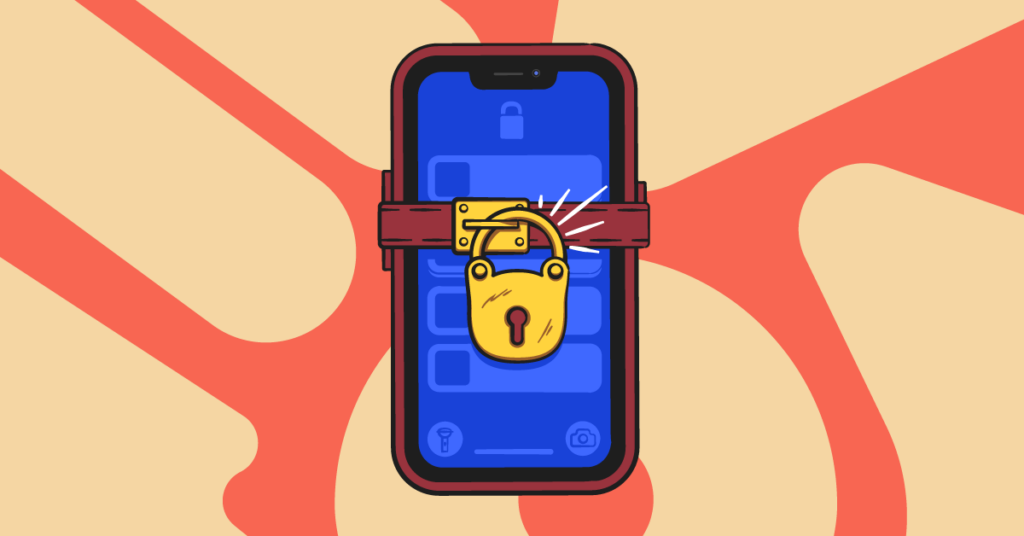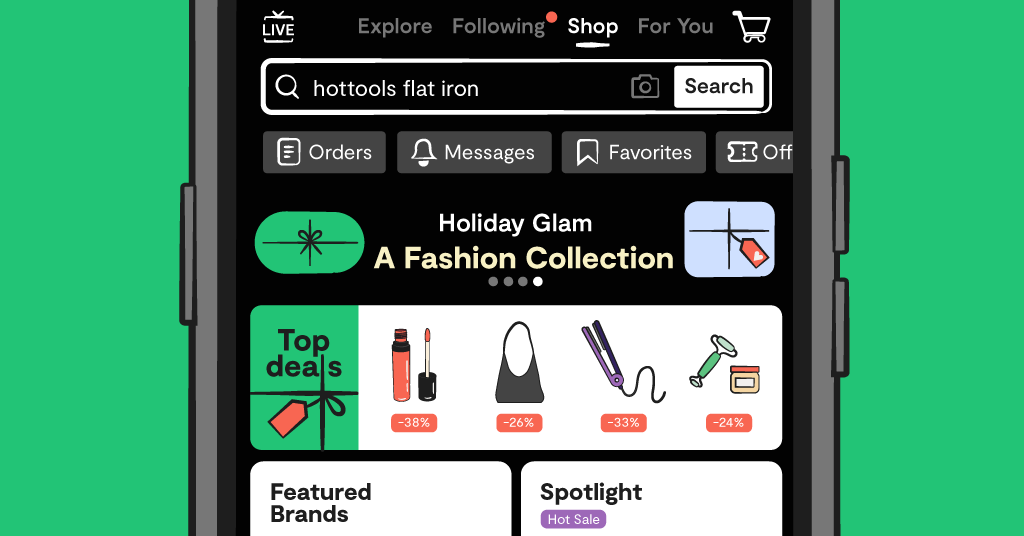
Imagine living in a glass house. Think about everyone watching what you do and how you spend your time. A bit terrifying, right? Today, many kids are living in a sort of virtual glass house. Everything gets documented. They might capture that late-night mac and cheese, snap a pic of their new outfit, or check in at a concert venue.
Not only is this normal, but it’s also often rewarded. Reputation, followers, likes, and even the ability to earn money (i.e., influencers) are all offered as “rewards” on social media. Too often, kids aren’t aware of how their activity can expose personal information and how this might affect their well-being, mental health, identity, and even physical safety.
We're going to walk you through some practical, empathetic ways to relate to your kid’s online experience, explain the lack of privacy on social media, and create family rules to help promote safety.
Social Media and Privacy (or Lack Thereof)
To your kids, the blatant lack of privacy on social media might not seem like a problem. Social media and privacy might even sound like a contradiction. Isn’t the whole point of social media to share details about your life, feelings, and whereabouts? How else will people know what your teenager had for lunch today?
Here’s a little context from Pew Research on how most young kids are thinking about social media privacy issues:
- Teens are sharing more about themselves than ever before, including sensitive personal information.
- Kids continue to use social media even after they start to lose interest because it’s a major part of their socialization.
- Only 9% of teens showed concern about 3rd-party access to their personal data.
Introduction to Social Media and Privacy While Online
How can you get your kids more interested in protecting their privacy online?
Connecting social media privacy issues to more serious and long-term problems might drive home their importance and relevance to your kids. Below are a few tips for starting a productive conversation about social media privacy issues:
- Make the consequences clear and relatable. The result of something like identity theft is more than inconvenience; it can affect their ability to get into college or get a car loan.
- Don’t make any topic off-limits. Let them know you are even willing to talk about things that involve violent or inappropriate materials.
- Give specific examples of actions that can compromise their privacy. Try asking questions like, “Have you ever told someone you know online but not in real life what school you go to?”
- Use the same privacy rules and recommendations for yourself — they don’t only apply to kids!
- Emphasize that most things done online are permanent, and can sometimes be found online even after profiles appear to be deactivated or deleted.
- Take some time to familiarize yourself with trends, terms, challenges, apps, and other popular ways of interacting online. Understanding your child’s world and using shared language (maybe even slang!) will help build trust.
Getting buy-in as a family can make rules that might otherwise feel strict seem more like a team effort. It’s important to clarify that family boundaries don’t apply to only one child. Also, you can explain that new rules about social media and privacy aren’t necessarily the result of past bad behavior. Instead, rules apply to all family members equally to keep them safe and protected online.
Clearly Define Protected Personal Information
So, you’ve gotten your kid on board and ready to protect themselves on social media. Great! Now what?
Your child might not have a clue what information is too sensitive to share publicly. You can help by establishing clear boundaries about which information is appropriate to post and share via messages. Non-shareable information might include the following:
- Where they attend school
- Their home address
- Their cell phone number.
- Their email addresses
- Their full legal name
- Any banking or payment information
- Passwords
- Their social security number
As we’ll discuss more in the next section, this information can often be used for all kinds of harmful online activity, from stalking to identify theft.
Explain Common Online Scams
Social media privacy issues aren’t always obvious. Scammers can use all kinds of creative ways to get personal or financial information from kids. This kind of activity can even put parents’ information at risk. For example, many parents give credit card information to their kids for purchasing apps or items online.
Accidentally falling prey to a scam can jeopardize more than your kids realize. To steer clear of social media privacy issues, your kids need to know how to spot threats. You might find it helpful to talk about some of the examples below with your kids, especially if they are older and more independent on social media.
Shady Apps
- What they are: Shady developers sometimes create apps that are used to harvest personal data, spy on devices, or illegitimately charge credit cards.
- What kids can do: Don’t provide payment information without verifying the app’s quality and reputation.
Fake Contests
- What they are: Has your child ever gotten excited about a contest or promotion online that promises cool swag or cash prizes? Fake contests usually look like giveaways or one-time offers that are too good to be true.
- What kids can do: Ask parents to check the legitimacy of a contest before providing personal data or payment information.
Phishing
- What it is: While the word “phishing” sounds silly, it’s a serious problem for individuals and businesses. Phishing is used to get access to protected personal accounts like online banking.
- What kids can do: Don’t reply to messages from people they don’t know. Don’t click on unfamiliar links. Be careful when browsing away from their home Wi-Fi.
Viruses or Malware
- What they are: Malware is used for all kinds of bad purposes, from stealing passwords to turning on webcams.
- What kids can do: Don’t open links from strangers. Ask for help before downloading a new app or file. Remind your kids that attackers could even use one of their friend’s profiles or accounts to send harmful content and links.
Identity Theft
- What it is: Minors can experience identity theft. By using private personal information, cyber criminals can open fake accounts at retailers, rent properties, falsify tax returns, and much more.
- What kids can do: Keep their personal information private. Partner with their parents to keep track of their data through monitoring tools.
For older kids (about 16 and up), discussing social media privacy issues might actually provide a good opportunity to teach other important life skills. For example, credit scores can be a simple and free way to keep track of which accounts have been opened in your kids’ names. By showing them how to check their credit score online, you can help them learn a valuable practice and protect their identity.
Emphasize the Importance of Physical Safety
Social media apps are meant to be, well, social! Regardless, oversharing about their personal location can put kids at risk.
Our recommendation for parents is simple: Encourage kids to not share information on their home address, school address, or exact whereabouts. Also, don’t share information that might expose the location of friends and family members. Bullies, predators, and shady companies can all use this info to track people against their will. To help out with this, you might consider looking into Bark's location sharing features.
A few other best practices for kids include:
- Don’t agree to meet people that they don’t know in real life (especially not alone).
- Tell people you trust where you’re going and what you’re doing when going out.
- Talk to an adult if you notice a suspicious person following your profile, liking your online activity, or messaging you directly.
Talk About Advertising and Data
We understand that advertising and data can sound boring. Honestly, it sounds a little like a sleep-inducing college course. But, these topics are really important for teaching your kids about social media and privacy.
For young kids (below 13), it might be sufficient to set controls and rules for their usage. However, older kids can probably begin to understand how social media companies use the information they share.
Without being too scary or specific, you can explain to your kids that social media apps like TikTok and Instagram use their personal data and activity to show them personalized ads. The apps are “looking at” content that they might think is personal and private, like:
- Private messages
- Browsing history
- Personal photos
- Online purchases
- Location data
There are some practical steps that parents can take to help kids keep nosy apps out of their business:
- Follow age requirements for apps. Kids will definitely wait until they’re allowed to start using these apps, right? Nope. In fact, research shows that kids are starting to use social media at younger ages. Most major social media apps (e.g., Instagram, TikTok, WhatsApp, etc.) have a minimum age requirement of at least 13 years old, but they don’t ask for verification or proof of age.
- Change app settings to maximize privacy. Apps and websites that serve children are required by law to say what information they collect and use.
- Make profiles private. This will limit what snooping visitors can see, regardless of their intentions.
- Eliminate personal information from accounts and profiles if it’s not needed. Social media apps will take as much information as users give them. The more information they get, the better they can allow advertisers to target each person.
Lastly, prominent tech companies (e.g., Facebook, YouTube, Google, etc.) have a responsibility to protect their users' data and personal information, but they can’t stop every threat. Though they might not realize it now, it’s important for kids to understand that the biggest companies in the world can accidentally expose their information, including things like email addresses, passwords, banking details, and more.
Don’t Use Social Media to Vent Private Feelings
Sometimes kids just want to connect with others who feel the same way they do. When they have a bad day or experience bullying, they might turn to social media to share their frustrations and feelings. While this might provide temporary relief, the long-term effects can be negative — from cyberbullying to, unfortunately, resurfacing when they’re older.
A healthy alternative to social media venting might be a hard-copy personal journal that can be kept safely in their room. For some kids, therapy might be another safe solution that provides a protected outlet for processing and conversation.
Use Bark to Detect Social Media Privacy Issues
Parental control apps like Bark eliminate the stress and uncertainty around kids’ online activity. We do this by giving parents the insight, content monitoring capabilities, and alerts needed to take action when it matters most.
These are just a few of the ways that Bark can help parents resolve social media privacy issues:
- Restricting access to specific social media apps
- Receiving alerts when suspicious or alarming activity is detected (e.g., instances of self-harm or cyberbullying)
- Setting and enforcing schedules for certain app usage, or household Wi-Fi access
- Monitoring texts, emails, and more for problematic interactions
Talking to your kids about social media and privacy is often easier when you start young. Over time, your kids will likely begin to feel a sense of ownership for their online activity, awareness, and practices. If they know what to look for and how to protect themselves online, kids will feel equipped to handle anything the Internet throws at them — from rude comments to full-blown phishing.
Read more
Bark helps families manage and protect their children’s digital lives.





